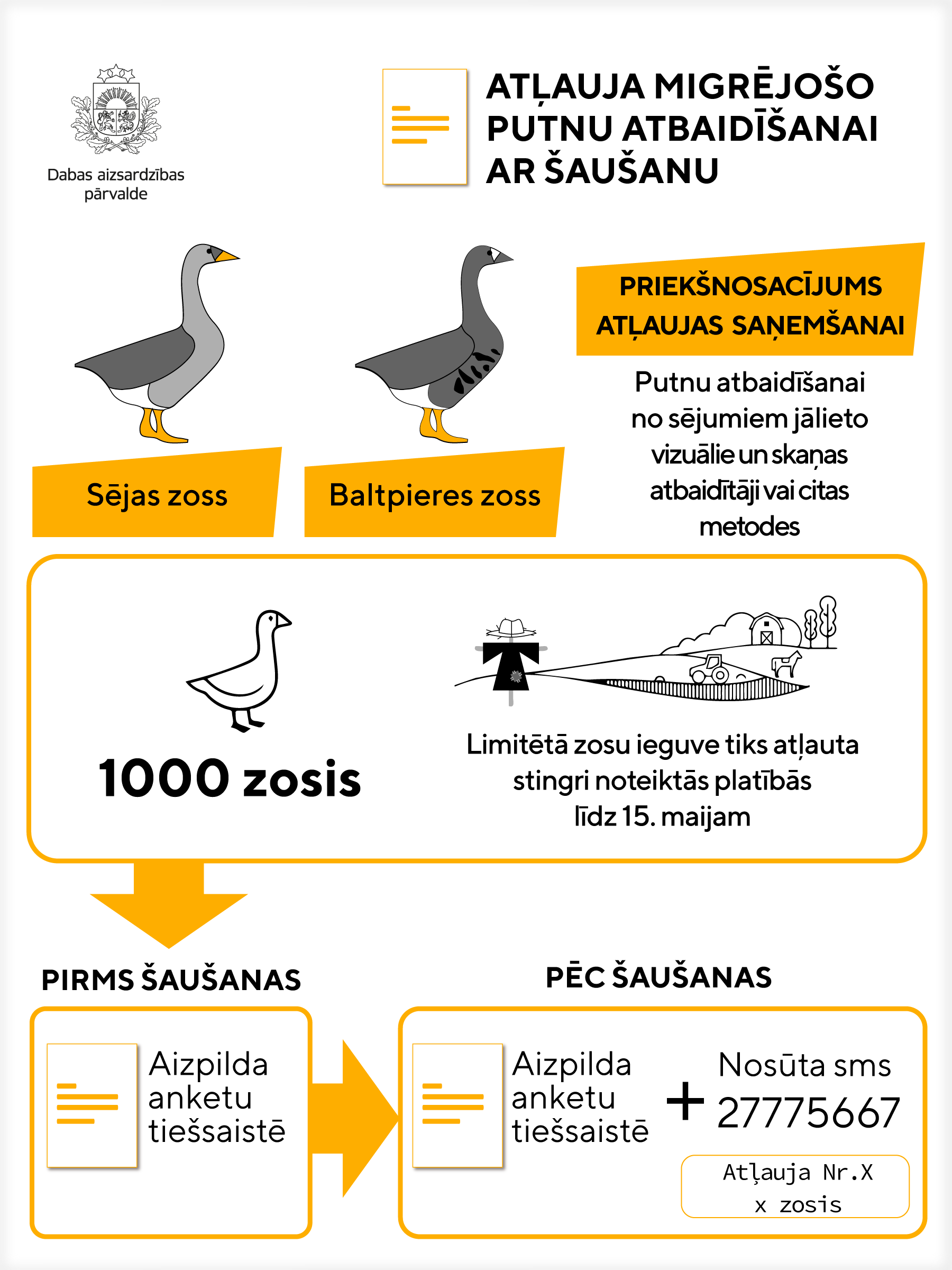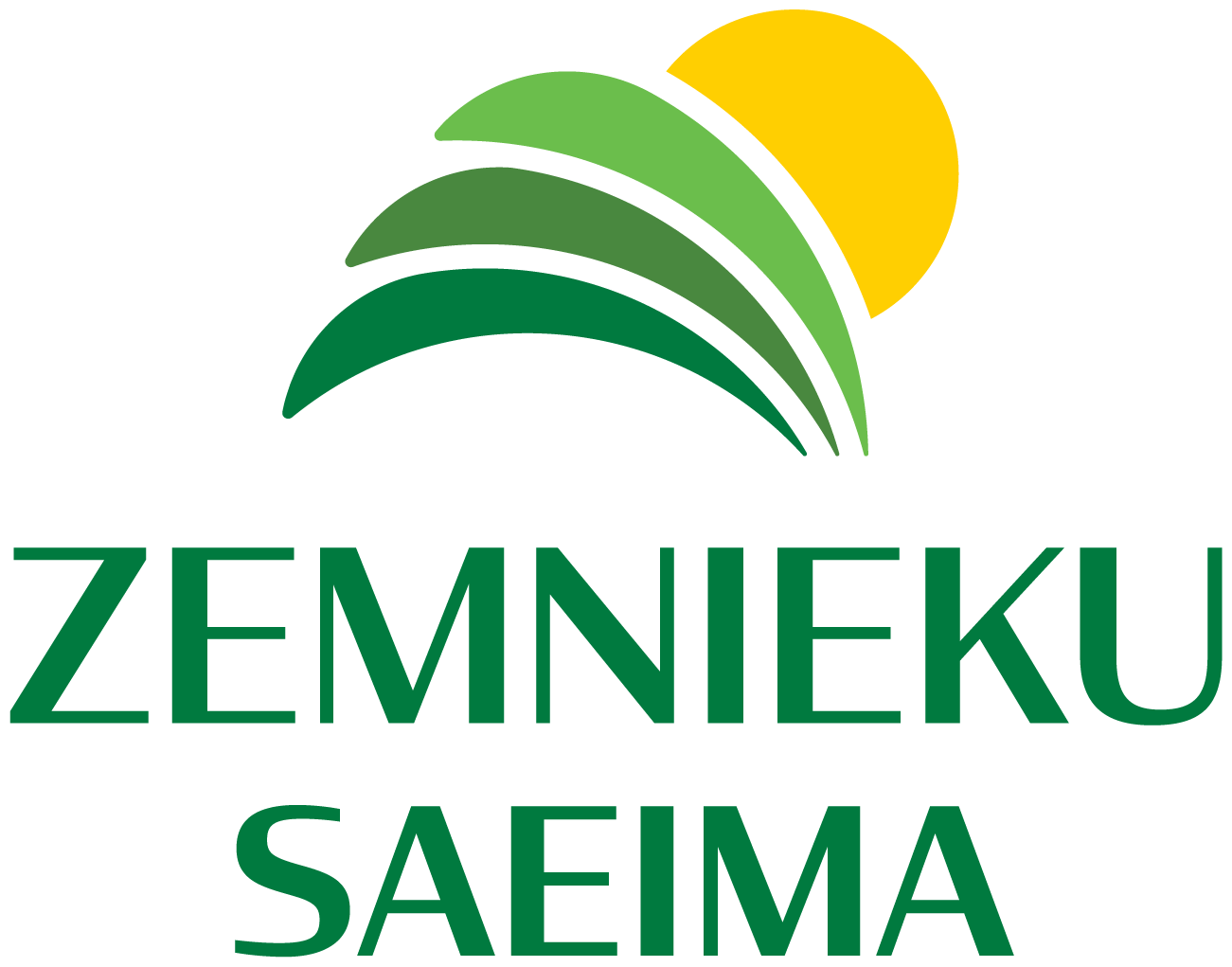We invite you to immediately submit applications for repelling migrating geese.
Considering that last year only 140 farms received permits to carry out lethal deterrence of migratory geese, we urge ZSA members to assess the situation and immediately write applications to the Nature Conservation Authority (DAP) regarding the possibilities of receiving permits to deter migratory geese from fields. This year, permits could be granted to a maximum of 180 farms.. Applications can also be submitted in cases where you suspect that geese may be present in one of your specific winter crop or upcoming spring crop fields.
In order to scare away flocks of hungry migratory birds from crop fields and reduce the damage they cause, farmers will exceptionally be able to apply for permits for lethal repelling or limited harvesting of geese from the Nature Conservation Board this spring. Despite the discussions that have taken place between the ZSA and DAP representatives regarding changing the system and setting limits on the use of geese, just like for lynxes and wolves, Like last year, the total number of geese that can be obtained in this way is limited to 1,000 individuals, but this year two species of birds will be allowed to be obtained using the lethal deterrence method. – barnacle goose Anser fabalis and white-fronted goose Anser albifrons. The species and number of birds were determined in consultation with scientists at the Institute of Biology of the University of Latvia and taking into account the experience of Latvia and neighboring countries in previous years.
Unfortunately, the DAP has not agreed to the ZSA's proposal to allow geese to be repelled with lead ammunition, because only the 30% of the existing smoothbore weapons allows the use of lead-free ammunition, and many of our other proposals to simplify the repelling of migrating geese were not taken into account.
This is the second year that the Authority will issue permits for the lethal repelling of geese to reduce crop losses. After the previous season, the Authority invited all permit recipients to provide their opinions and the recommendations received have been taken into account, to the extent possible, when developing the procedure for this year. Before determining the procedure, consultations were held with other state institutions and scientists, as well as the ZSA and hunters' organizations.
The aim of lethal deterrence is to reduce losses caused by migrating geese in the spring, and permits will be available to farmers who grow crops most at risk, such as winter wheat, winter barley, winter and summer rapeseed, field beans, peas, spring wheat, oats, corn and other crops sown in arable land.
Hunting geese with hunting weapons is permitted only if a permit from the Administration has been received, and during the repelling process, both the conditions of the permit and the requirements of the regulatory enactments governing hunting must be observed. Upon receipt of such exceptionally issued permits, it will be prohibited to use and take lead ammunition into the field, hunting geese will be permitted only during daylight hours, when the birds have landed on agricultural lands. If the geese take off, hunting and repelling them must be stopped.
It should be noted that lethal goose deterrence is not permitted in specially protected nature areas, which are designed to protect birds, and limited goose hunting will only be permitted in strictly defined areas until May 15.
Both the Species and Habitats Protection Act and the Hunting Act, which implement the Council of Europe Directive on the conservation of wild birds, prohibit the hunting of migratory birds in the spring in the traditional sense of hunting. However, if there is no acceptable alternative and it does not harm the populations of the species concerned, exceptions are provided for the taking and disturbance of birds in certain cases - for example, to reduce damage to crops.
According to experts, the feeding of migratory birds in crops has noticeably increased, because as the use of agricultural land changes, including the conversion of grasslands to arable land and the creation of larger continuous fields, birds are more willing to feed in crops, which contributes to the increase in the number of geese. In the middle of the last century, the number of geese in Europe had decreased to a minimum due to overhunting and the disappearance of natural habitats, and thanks to the introduction of strict protection measures, mainly the ban on spring hunting, the populations of several goose species are currently recovering.
The Authority notes that lethal goose deterrence is not the only method to deter birds from feeding in fields. Farmers may use tools that produce a sound similar to the use of hunting weapons, as long as the use of such tools does not conflict with the requirements of other regulatory enactments. READ MORE!
If you have any questions, please contact Mārtiņu Tronas by calling 29805456 or by email. martins.trons@zemniekusaeima.lv


